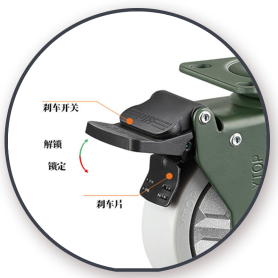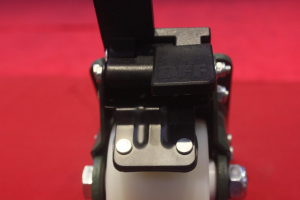The locking mechanism of the casters is usually designed to hold the casters in place when needed.to prevent accidental movement or sliding of equipment or items.The working principle of the locking mechanism relies on friction or mechanical locking.Common locking methods include side brakes, rear brakes, single brakes, dual brakes, and self-locking brakes.Side and rear brakes lock the wheels by creating friction through contact between the brake pads and the wheels.The single, double and self-locking brakes, on the other hand, are mechanically constructed to automatically lock the casters when the brakes are released.
Advantages and disadvantages of caster locking mechanisms
vantage
Security:The locking mechanism allows the wheels to be locked quickly and efficiently when needed, the preventing accidental movement.Reduce the risk of injury to people or damage to items.
Convenience:The user can activate the braking mechanism by a simple operation (e.g., stepping, pulling, or rotating).Facilitates locking or unlocking the wheel in different situations.
Durability:Brake casters made of high-quality materials have good abrasion resistance, compression resistance and durability.Suitable for long time use.
Applicability:Brake casters are suitable for all kinds of equipment or objects that need to be moved and fixed.Offers a wide range of applications.
drawbacks
Structural complexity:Certain locking mechanisms may add to the structural complexity of the caster.This may affect its durability and ease of maintenance.
Cost:complex locking mechanisms may lead to higher production costs.This needs to be weighed at design time.
Maintenance needs:Regular inspection and maintenance of the brakes is necessary.to ensure its proper functioning and safe performance.
When selecting a caster locking mechanism, the The most appropriate design solution needs to be determined based on specific application scenarios, security requirements, cost budgets, and maintenance capabilities.
Post time: May-27-2025



